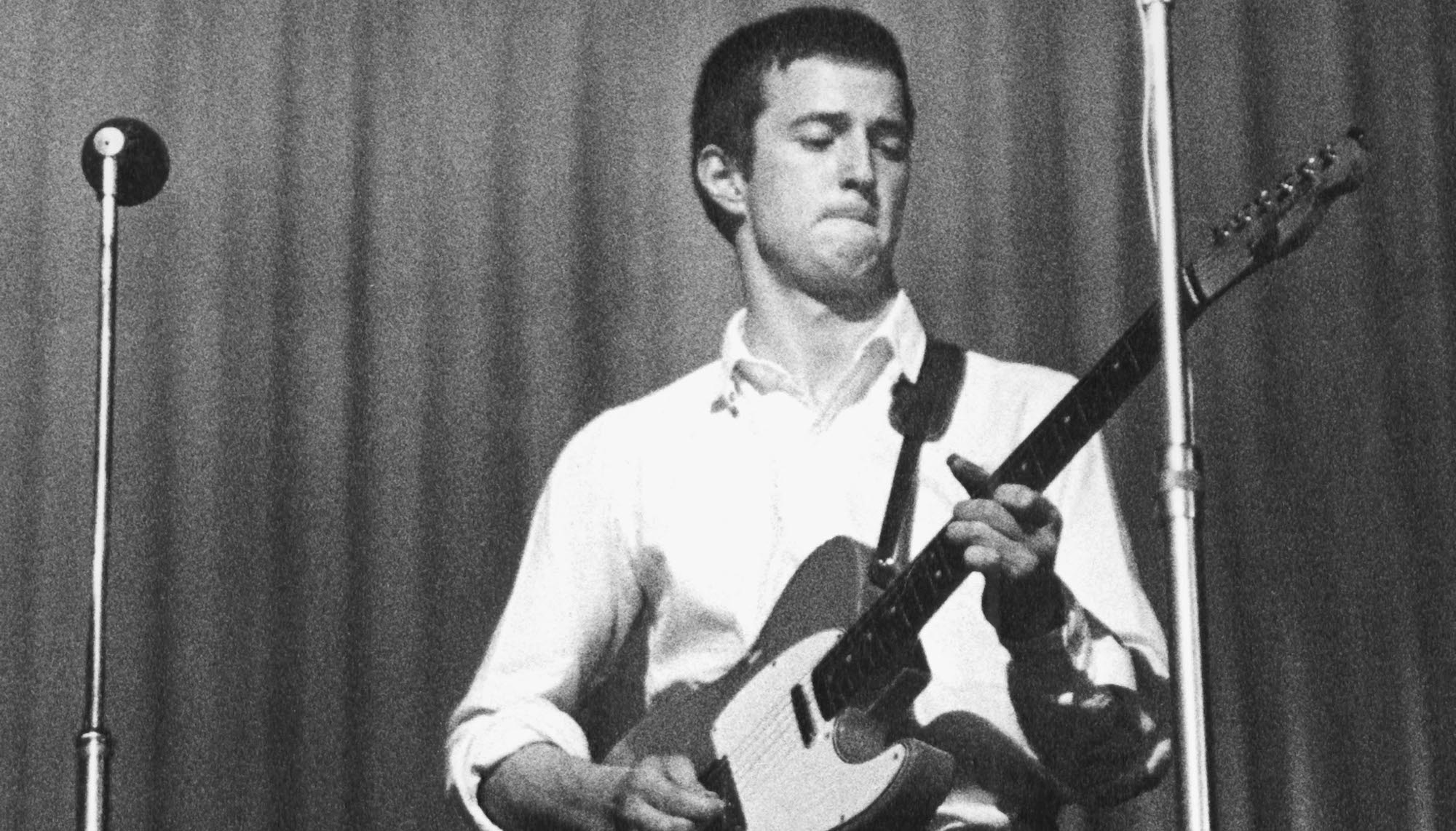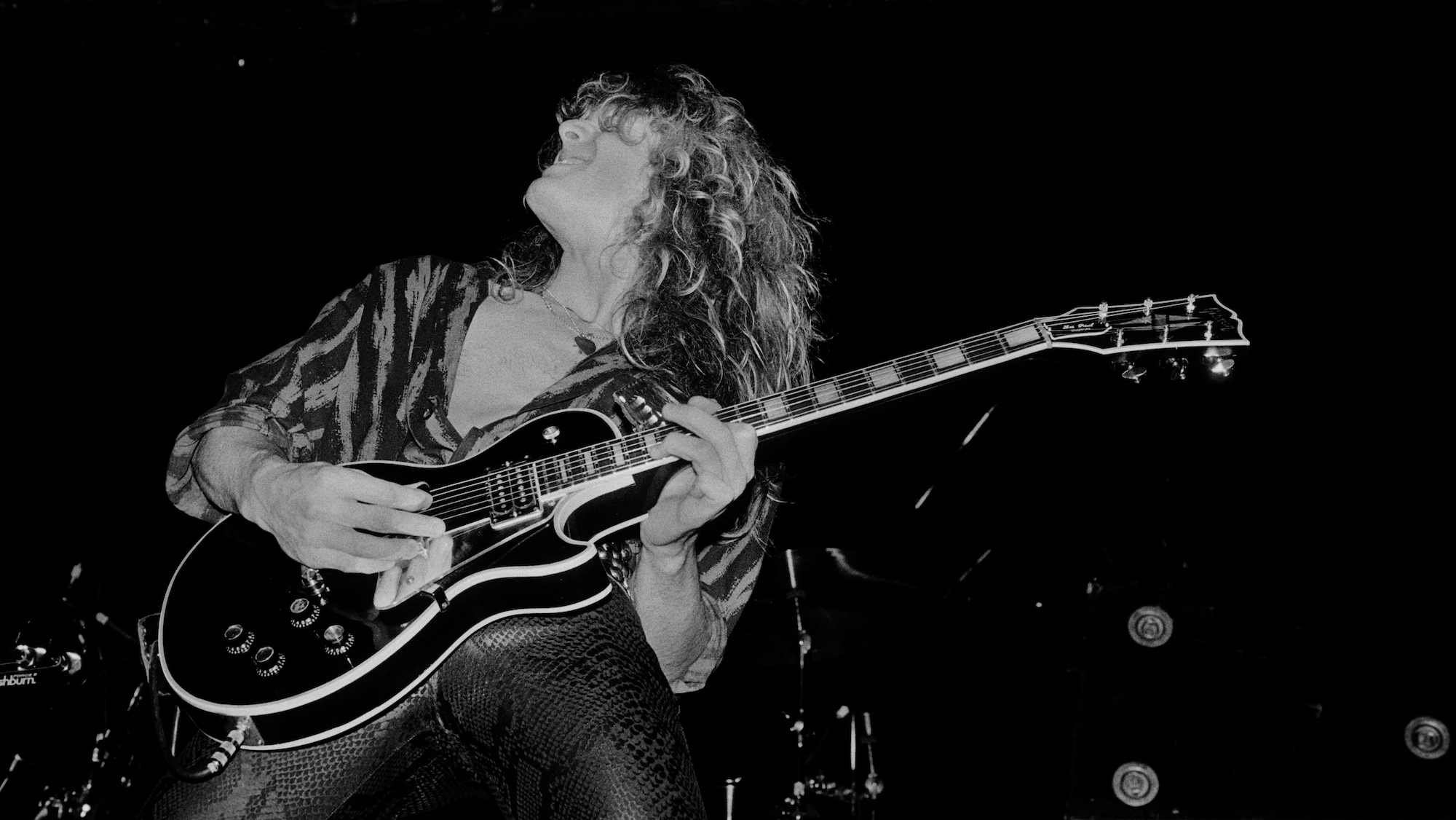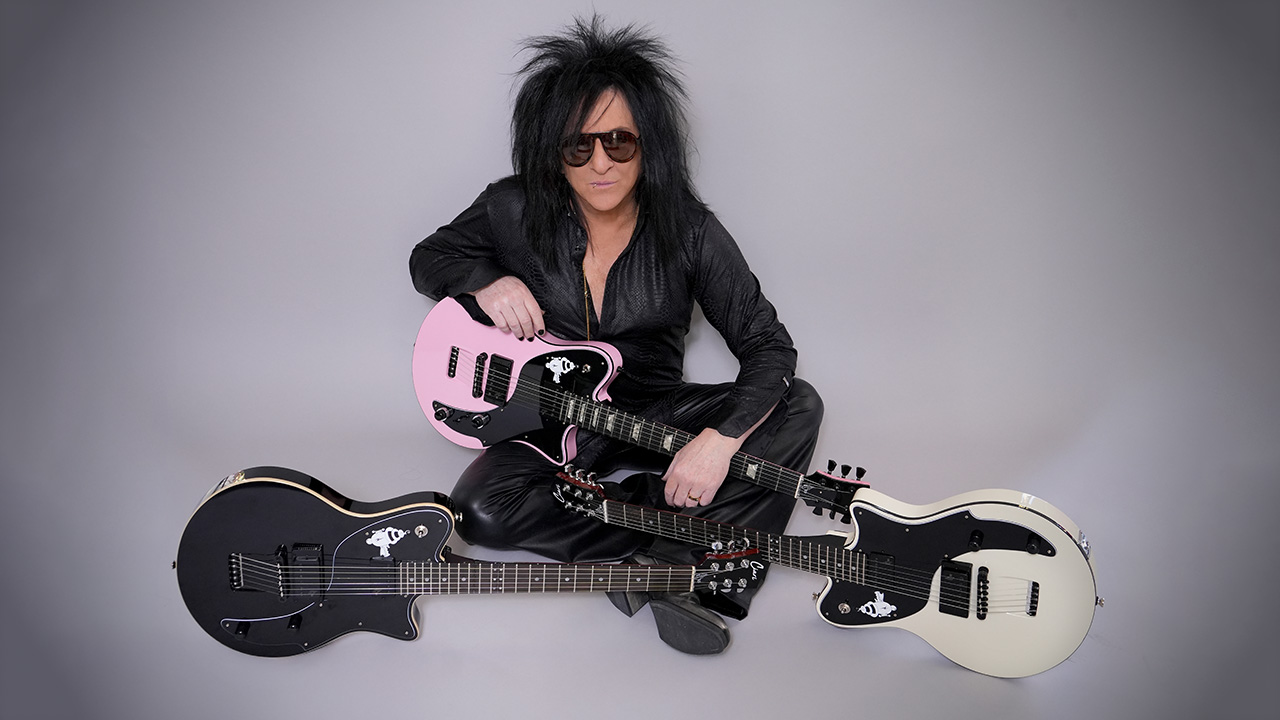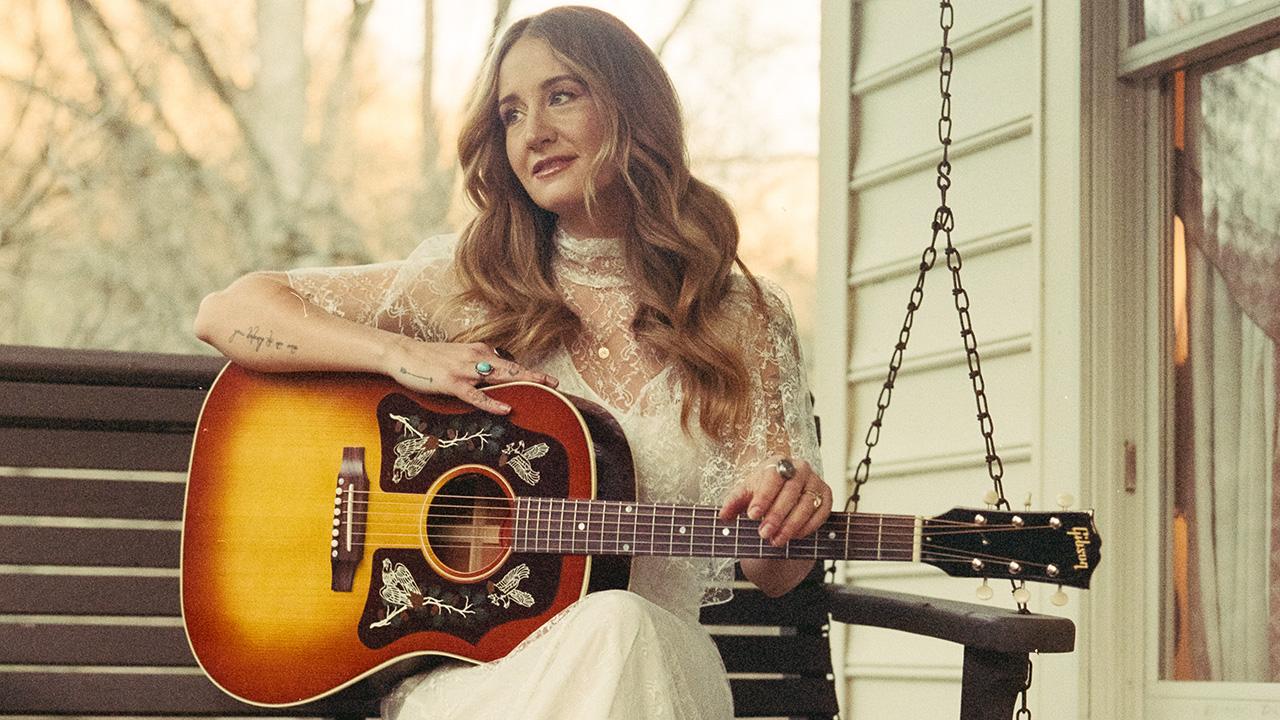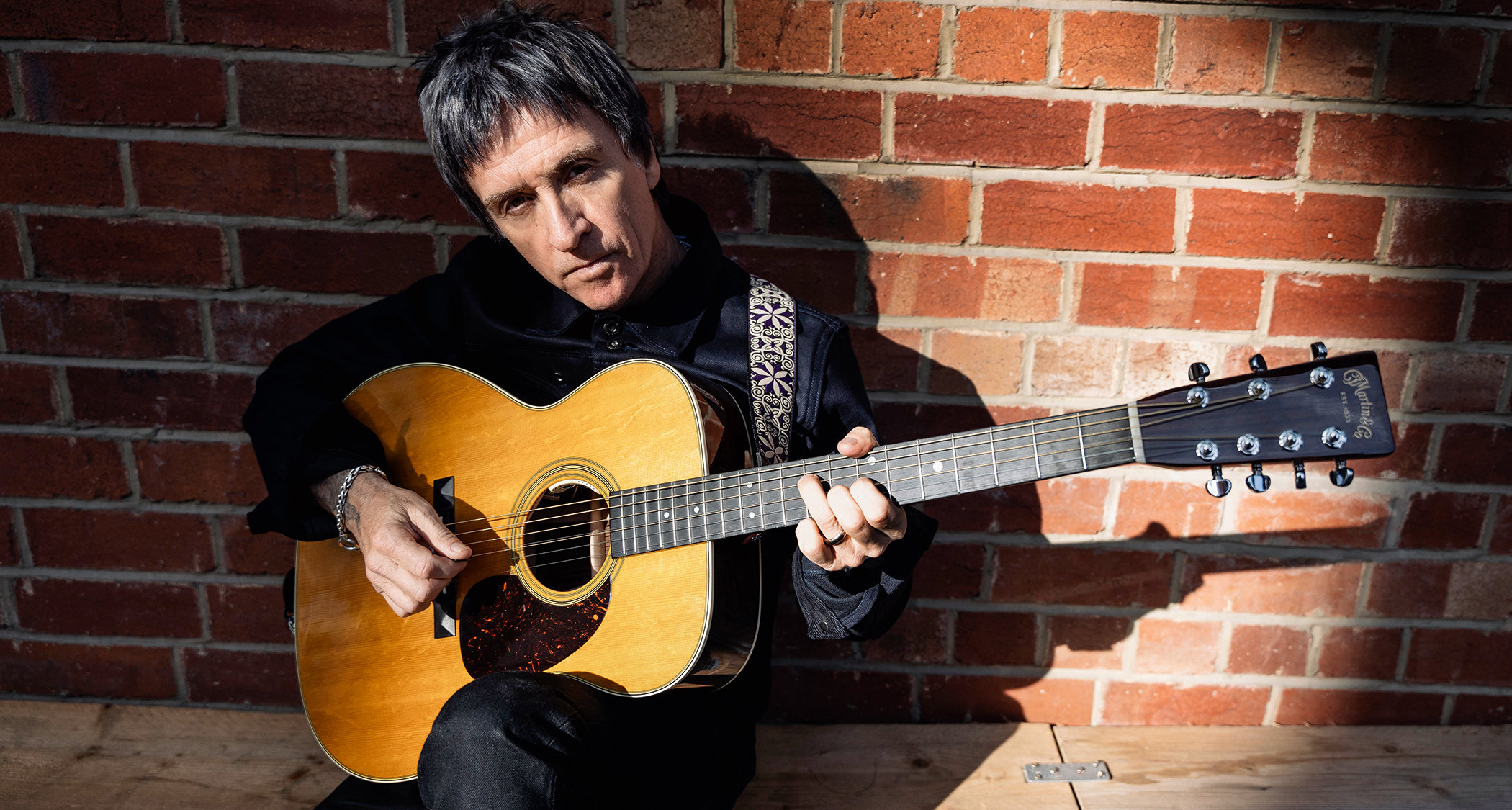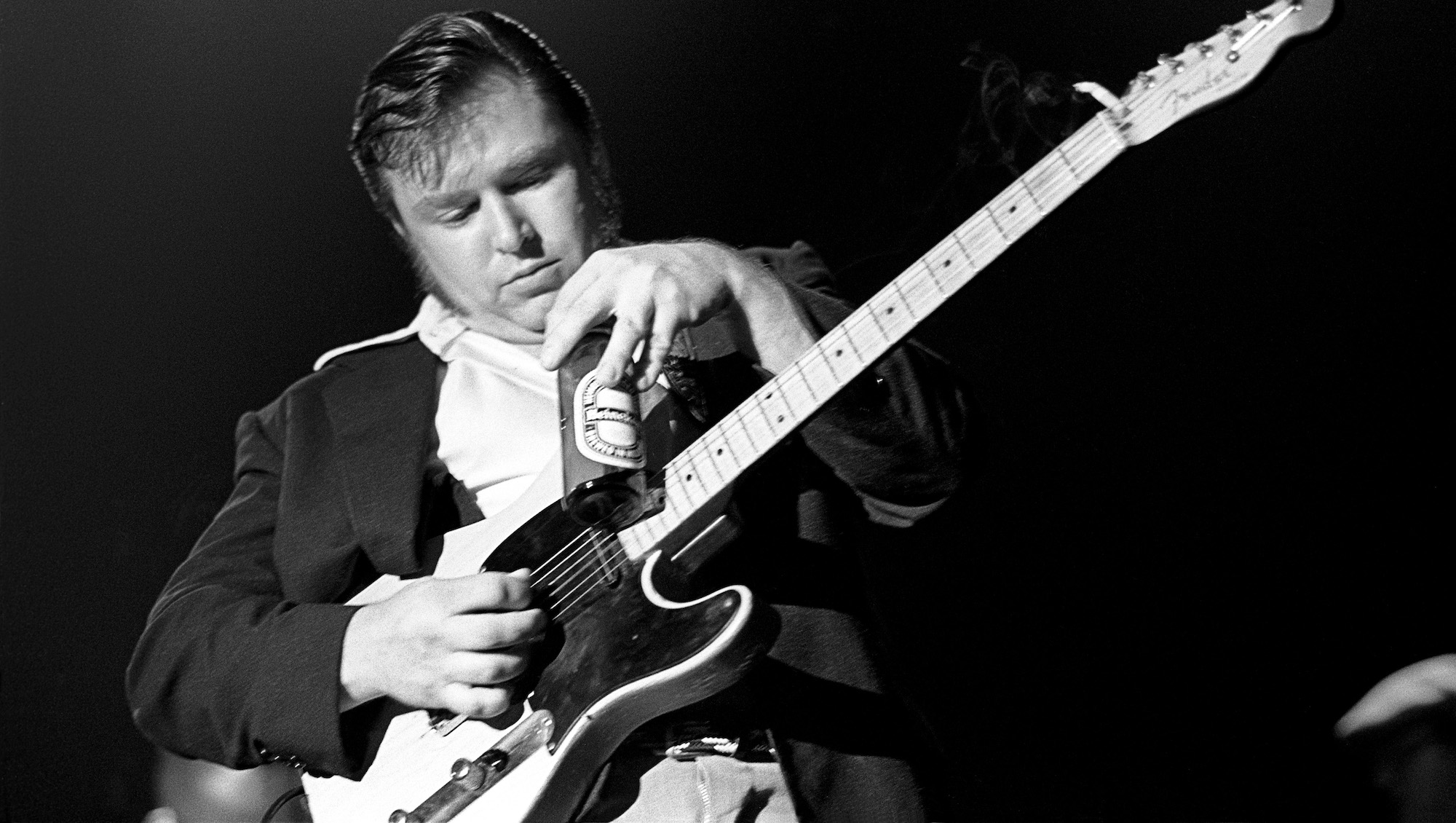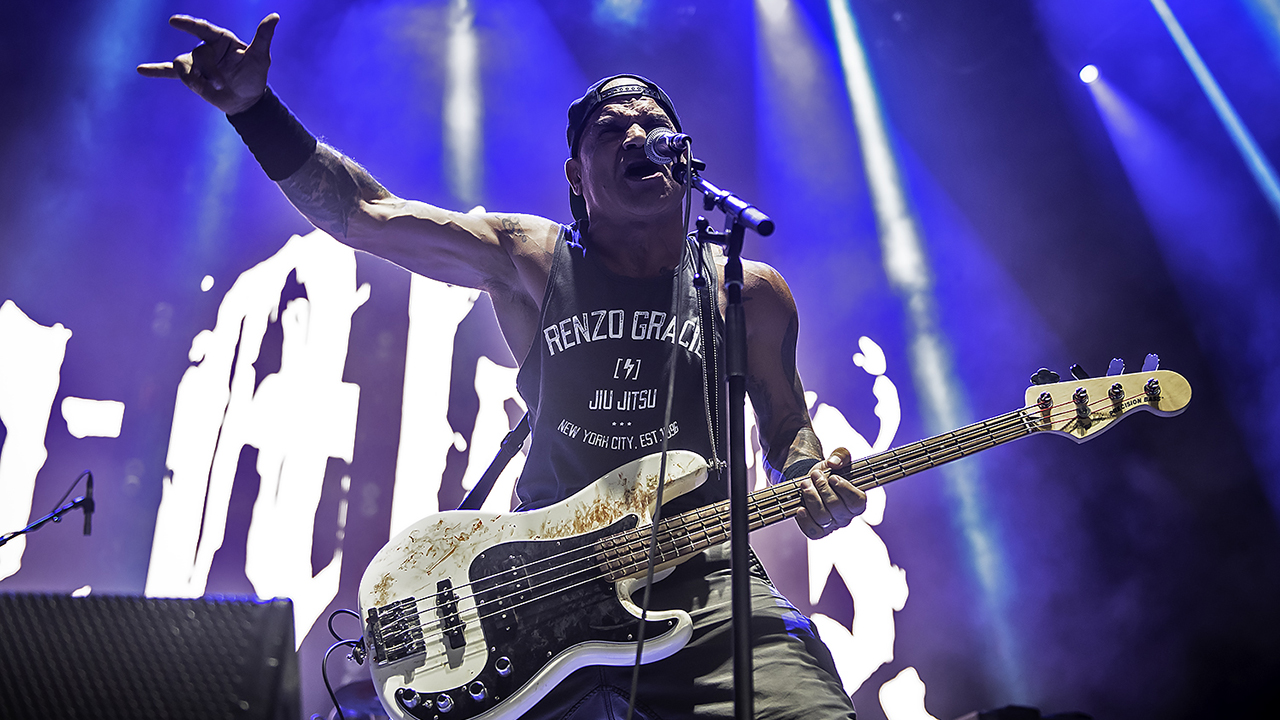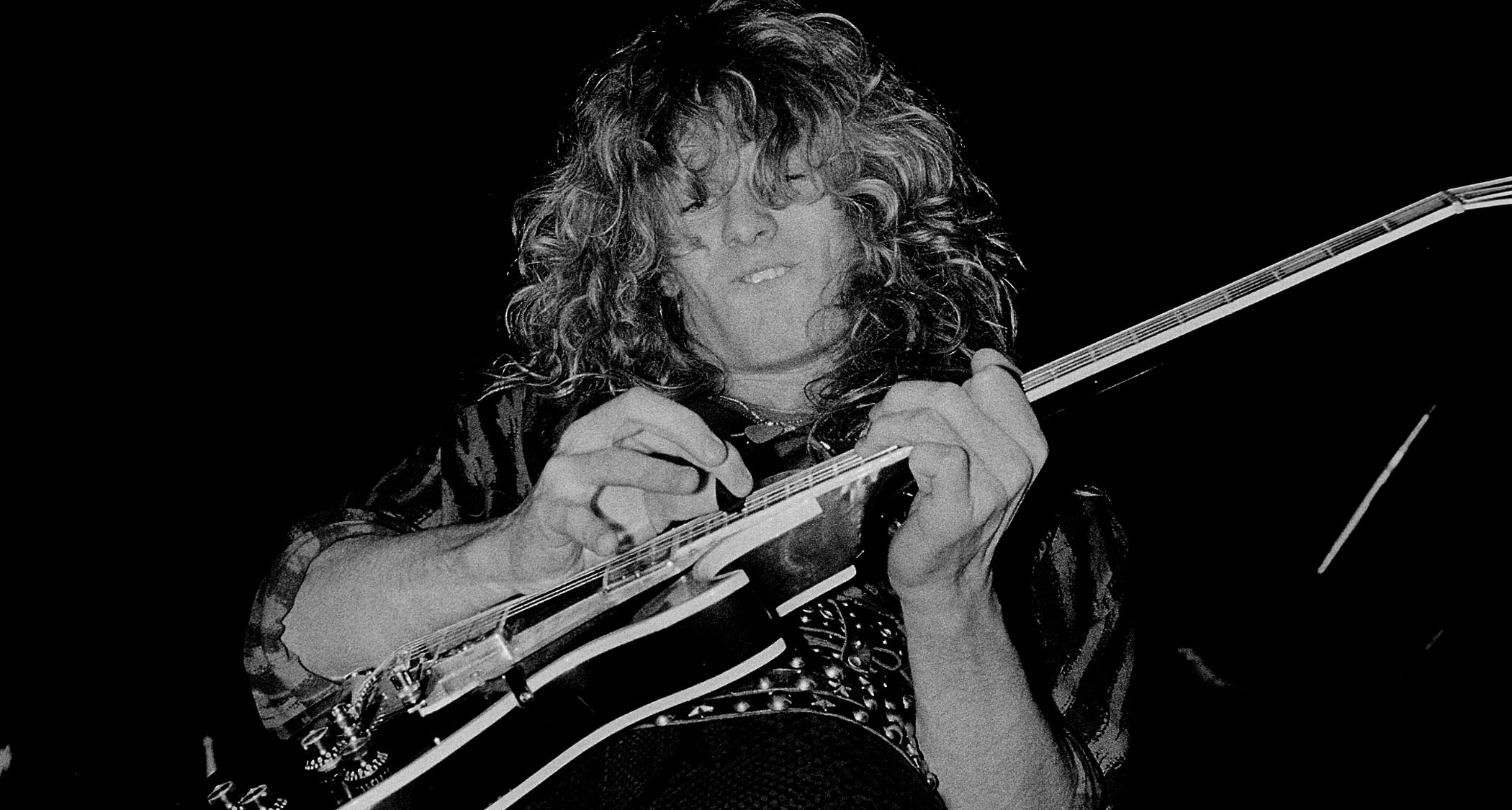“I wrote loads of the Smiths stuff on my first Martin. It was from some hire company – I just refused to give it back!” Johnny Marr on creating his 7-string Martin acoustic, his disdain for satin necks, and why the Smiths were really a folk band
Tearing up the blueprint with an octave G string, Johnny Marr’s new seven-string Martin signature model is a distillation of all the British icon’s most rebellious opinions on acoustic
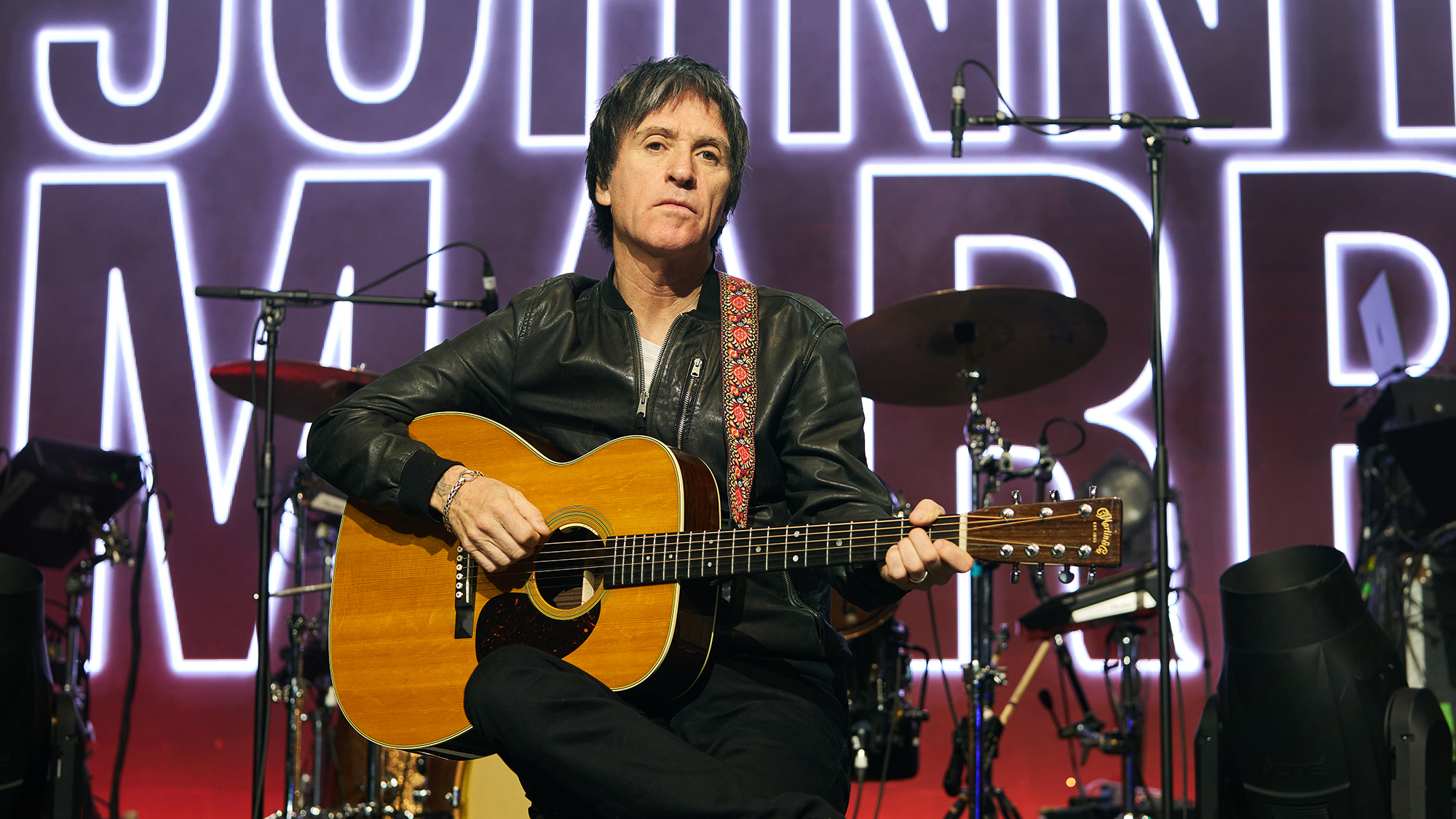
It was December 2023, and backstage at Manchester’s Aviva Studios, Johnny Marr was wrestling with a dilemma. Playing the same venue the night before with a 30-piece orchestra, he’d turned to a Martin D-28, of the kind that propelled him to ’80s stardom in the Smiths, and gifted him classics like There Is a Light That Never Goes Out.
Now, flanked by elite classical musicians and facing an expectant hometown crowd for the second show, Marr found himself debating whether to give a trial by fire to the prototype of his new signature Martin M-7, which was delivered half an hour earlier.
As the man who jumped from that most cherished of British indie-rock bands with no safety net in 1987, perhaps it’s no surprise to learn that Marr took the leap of faith that night, walking from the wings with the head-turning seven-string model.
“The minute I took it out, people noticed the tuning configuration and did a double-take,” Marr tells us. “But the most striking thing is when you hear it.”
Conceptually, the M-7 is not quite without precedent. Back in 2005, that other great master of crystalline chime, Byrds icon Roger McGuinn, launched a signature Martin guitar that also offered a doubled G string.
Even so, it’s remarkable to hear how Marr’s new model sings, its jangle-ready format accentuated by a wishlist of build features including an all-solid Grand Auditorium body, full-thickness mahogany neck and three-piece back (a regular six-string, the M-6, is also available).
“It was all instinct for me,” he says. “But the really exciting thing was whether all those different features would work together as one instrument.”
Get The Pick Newsletter
All the latest guitar news, interviews, lessons, reviews, deals and more, direct to your inbox!
Do you remember the first time you saw a Martin?
“Yeah. It would have been Rory Gallagher in 1976, when he did that acoustic bit in his set. Before that, it was Neil Young, Stephen Stills and Joni Mitchell.
“I was just a kid then, but in the ’70s, it was mostly American artists who were playing Martins. It was the Californians’ choice. I don’t think John Martyn played Martins. And I think Bert Jansch would have played whatever he could get his hands on at the time.
“I was always into D-28s – from before I could get one, really. A lot of my heroes were playing them and I thought they were dead cool. The first Martin I got myself was the 1971 D-28 that I wrote loads of the Smiths stuff on. I got some great songs out of it, straight out of the gate, and it recorded really well.
“I think the first song I wrote on it was Well I Wonder, and I used it from the Meat Is Murder album onwards. It was from some hire company – I just refused to give it back! I did end up paying for it, by the way. And I’ve still got that guitar.”
What was so good about that particular D-28?
I’ve got loads of mates who bought early-’70s Martins, and they’re all great
“Well, I think if it’s a Martin from the early ’70s, it’s gonna be a good instrument. We all know there’ll be some narky idiot on the internet who’ll want to contradict me on that – but they’re wrong.
“Every early- and mid-’70s D-28 I’ve played has always been really musical. It seems an obvious term to use about a guitar, but that’s the best way I can put it. I did notice that mine was a particularly good one. But I’ve got loads of mates who bought early-’70s Martins, and they’re all great.”
Which other Martin models have been in your lineup?
“Usually, I don’t go for lots of pearl and fancy designs. I like things that feel a little more pragmatic and straightforward. So the D-28 appealed to me on that level. That was my main six-string until the early ’90s, when I got into D-35s with Electronic and Pet Shop Boys. I guess I just fancied a change. I also used a D-41 on Strangeways, Here We Come, so I would flip between that and the D-28.”
Let’s talk about the standout feature of your new M-7 – that octave G. Were you aware of Roger McGuinn’s model?
“No, I’ve never come across it, although I saw him talking about it once. I think the idea came out of conversations with my dear friend Bill Puplett. He told me about some obscure blues player in the early ’60s who played around the clubs in Soho with a seven-string.
“Conceptually, it seemed like a good fit for me, because of the ringing thing I do. I just thought, ‘Seven strings are probably better than six.’ In that regard, anyway. I wouldn’t be interested in a seven-string electric with the low B.”
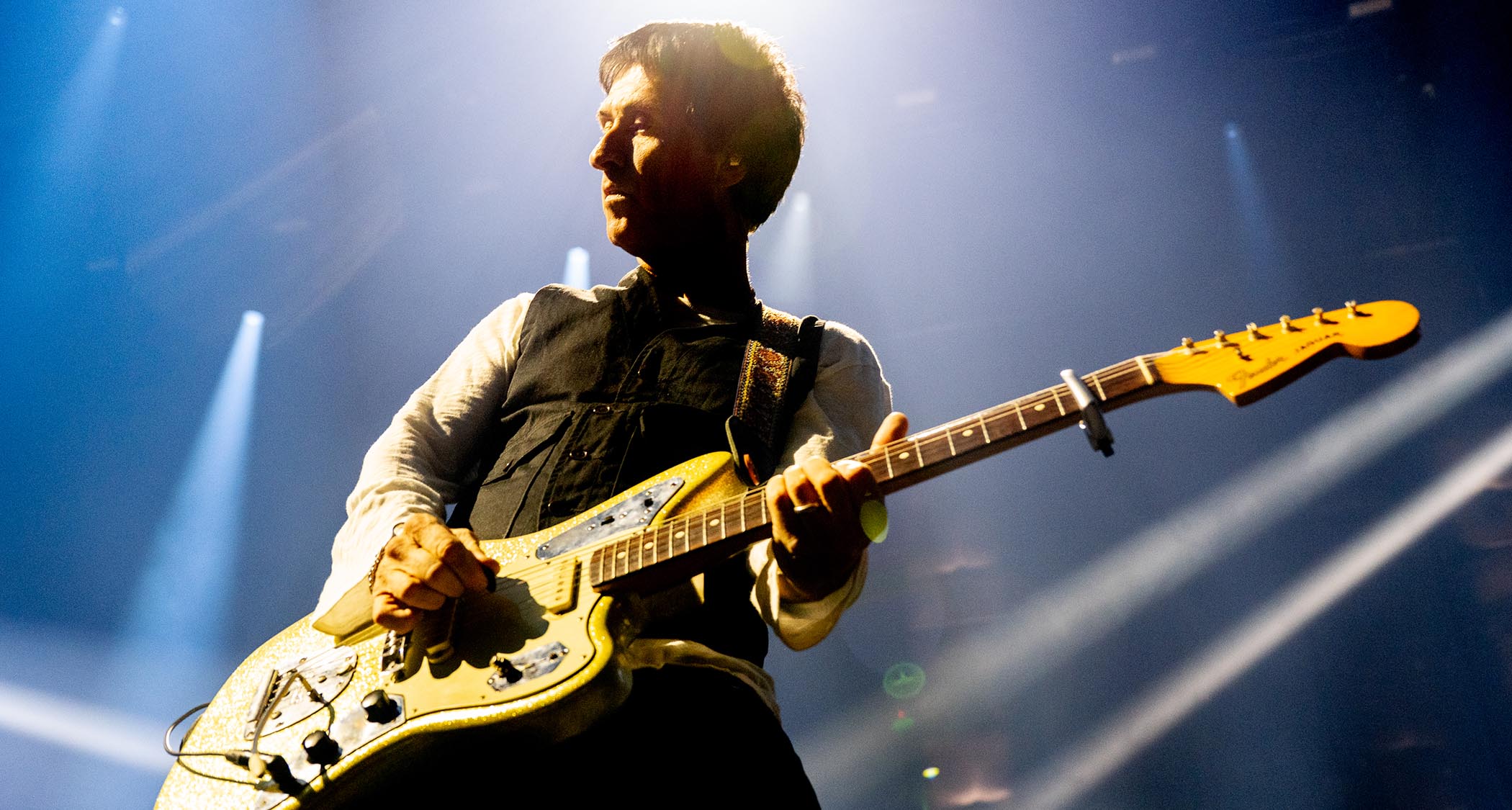
The M-7’s tone has a 12-string guitar flavor, but how does it compare to play?
The seven-string is definitely a different beast... in terms of technique and application, it’s hardly any different to a six-string, but sound-wise, it adds a new dimension
“With the way I play – which is a bit of a ‘one-man band’ approach – I’m trying to play the whole song, a cross between rhythm and top lines. You can do that on a 12-string, but you have to apply yourself and you need a big breakfast. It’s not for the faint-hearted.
“I’m really glad I persevered when I was younger and it didn’t alienate me too much, because I know a few players who just don’t want to know.
“So I’m au fait with 12-strings, and the seven-string is definitely a different beast. It’s much easier to negotiate, and in terms of technique and application, it’s hardly any different to a six-string, but sound-wise, it adds a new dimension. With some of my old riffs that would have been played on a regular six-string, it sounds more like the ‘deluxe’ version.
“It’s definitely different, particularly if you lean into it with voicings that have a lot of activity on the G. What can I say? Ring ring, y’know? But some of that sound is also down to the construction of the actual guitar, more so than just the extra G string. That’s almost as significant as having that extra string, which is why we’re also doing the six-string version.”
You’re known for using dreadnoughts, but this is a Grand Auditorium.
Unlike my pals, I didn’t feel the need to abandon the acoustic as soon as I could get an electric
“That’s right. I wondered whether the narrower body would be more comfortable. Had that not worked, I would have gone back to a regular size. But it makes me want to play with more attack. I’m playing more like Pete Townshend, because my ear instinctively wants me to get more juice out of it.
“I think that’s what certain players – some of whom are my friends – like out of [Gibson] J-200s and Hummingbirds, that are traditionally used for rhythm. This is a really strong rhythm guitar. I think it’s the closest that Martin has got to those rock ’n’ roll records that usually have J-200s on.”
And you specified a full-thickness neck with gloss finish?
“I have to try and talk about the neck without sounding offensive or angry. Satin finishes: why? No need. You’re really playing that fast that you need to have a satin neck? Really?
“Like, a beautiful glossy neck, that was on all the old guitars since time immemorial – your technique is so dazzling, or you’re so uncomfortable putting your hand on that gloss, or you’re so affronted by it, that we’ve had to have years of really bad finishes on necks? No need. Wear it down yourself, you lazy sod!”
Why did you decide the L.R. Baggs Anthem acoustic guitar pickup would bring out the M-7’s voice?
“It’s a little bit of a throwback to the Baggs on my D-35 I used with Bert Jansch. Bert – who was a great lover of guitar technology – always remarked on my Baggs pickup. It was a coincidence that Baggs was the Martin company’s pickup of choice anyway. So that was a lucky thing.
“It’s really nice to calibrate, the preamp is great, and then, as I was saying, I got to try it out literally 30 minutes after it arrived with an orchestra. I wasn’t sitting around for two weeks being conceptual, because there’s no better test than getting up on stage in front of 2,000 people.”
What was it about the acoustic guitar that called to you as a teenager?
“Well, unlike my pals, I didn’t feel the need to abandon the acoustic as soon as I could get an electric. It’s partly the reason why I play electric the way I do, which is born out of moving first-position chords around the neck and finding melodies within those shapes.
“A couple of my pals wanted to be Ritchie Blackmore and Jimi Hendrix – and I get it. But I wasn’t intending on forming a band that sounded like Voodoo Child or Highway Star.
“I liked the sound of Bus Stop by the Hollies, and what Tony Hicks was doing on those records. Going even further back, to being a little kid, the first guitar sound I was hooked on was what Don Everly did on Wake Up Little Susie, and those early Everlys records, because my parents used to play them at parties, very loud. And the acoustic overdubs on C’mon Everybody by Eddie Cochran.”
You’ve talked about the Stooges’ Gimme Danger as a key influence.
“A hundred percent. That’s a great example, now you bring it up. And Nils Lofgren – a big track for me is Share a Little, off of Cry Tough. It’s so compressed, and because he plays with a thumbpick, he’s got so much attack on his downstrokes. The sound of that, for a long time, I thought was one of the best things I’d come across.
“He also had a band called Grin, and there’s a similar sound on a song called Love Or Else. You can hear the bridge rattling because he’s hitting it so hard. And then, of course, growing up in the U.K. in the ’70s, you can’t ignore the Who’s Pinball Wizard.”
Likewise, you’ve said you wanted your Smiths acoustic parts to have attitude…
“I was determined that this aspect of the band was going to get noticed. I was so proud for us to be an all-out guitar band, that I didn’t want to be polite about those things. The songs I’ve mentioned – the Everlys, Eddie Cochran, etc. – were in the rear-view mirror in the culture of the early ’80s. But not in mine. So it was my agenda to push that.
“You know, like on the start of Bigmouth Strikes Again, say, and Unhappy Birthday. At the time, I was conscious that no-one else was doing that, even after I’d been doing it for a few years. That was another one of the things I was proud of the band for.”
Radiohead’s Thom Yorke supposedly once said he considered the Smiths to be a powered-up folk band. Would you agree?
“Yeah, I like that. I really liked Bert Jansch. And because of Bert, I listened to Martin Carthy, John Martyn, eventually Nick Drake and Donovan. So folk is in there.
“I did go through a time where I thought of us exactly the way Thom puts it, a folk band but [fused with] the Patti Smith Group. I think I was pretty deliberate about that. And d’you know what? A lot of the Velvet Underground sounds like folk to me.”
Do you feel like the M-6 and M-7 have good songs in them?
“Oh yeah, I absolutely do. Let’s put it this way – since I got my signature Martins, I really don’t feel the need to pick anything else up.”
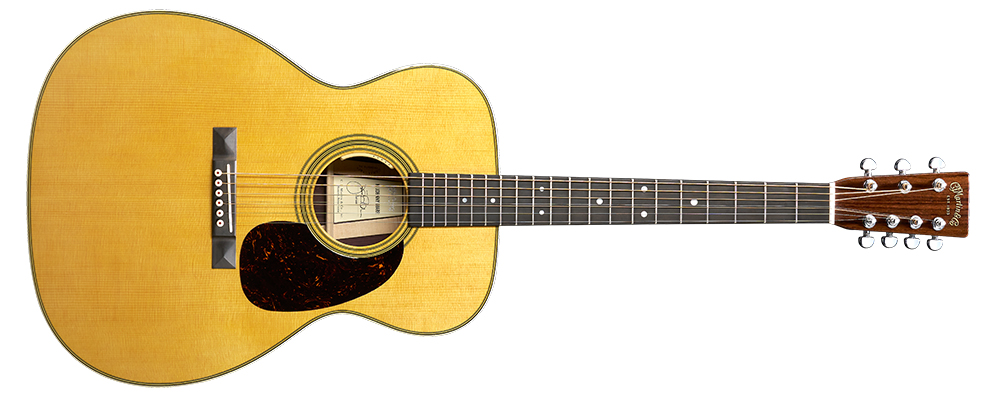
You could have easily just stayed in the Smiths. Where did that musical curiosity come from?
“I think it’s just my personality. I can’t remember a time when that impulse and that broad remit as a musician wasn’t there. Everything was fair game to me, although there’s definitely things I don’t like – some classical music just doesn’t resonate with me, and there’s a lot of extreme metal I’m not interested in, obviously.
“For some reason, the only word I can find for it is ‘wonder.’ It’s that, really – wonderment in music. I didn’t know it was going to happen, but working with Hans Zimmer now makes total sense to me. I had to kind of beat through the undergrowth for that privilege. But it comes as no surprise to me.”
- Find out more about Johnny Marr's signature M-7 at Martin Guitar.
Henry Yates is a freelance journalist who has written about music for titles including The Guardian, Telegraph, NME, Classic Rock, Guitarist, Total Guitar and Metal Hammer. He is the author of Walter Trout's official biography, Rescued From Reality, a talking head on Times Radio and an interviewer who has spoken to Brian May, Jimmy Page, Ozzy Osbourne, Ronnie Wood, Dave Grohl and many more. As a guitarist with three decades' experience, he mostly plays a Fender Telecaster and Gibson Les Paul.
You must confirm your public display name before commenting
Please logout and then login again, you will then be prompted to enter your display name.
“I suppose I felt that I deserved it for the amount of seriousness that I’d put into it. My head was huge!” “Clapton is God” graffiti made him a guitar legend when he was barely 20 – he says he was far from uncomfortable with the adulation at the time
“I was in a frenzy about it being trapped and burnt up. I knew I'd never be able to replace it”: After being pulled from the wreckage of a car crash, John Sykes ran back to his burning vehicle to save his beloved '76 Les Paul
![Johnny Marr - Hi Hello - Official Music Video [HD] - YouTube](https://img.youtube.com/vi/vT_IlY0A4_0/maxresdefault.jpg)






